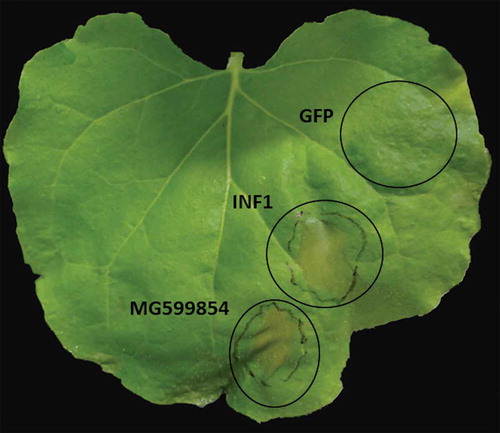Figures & data
Table 1. Nematode species used in this study and the number of predicted DnaJ by proteome.
Figure 1. Maximum likelihood tree reconstructed with DNAj proteins found in Meloidogyne arenaria. The accession numbers highlighted in red correspond to the members of the DNAj type I proteins, the blue labels correspond to DNAj type II proteins, black labels to DNAj type III proteins and green labels to DNAj type IV proteins, in concordance with Rug and Maier [Citation23]. Blue light labels correspond to DnaJ proteins with J domains and DnaJ C-terminal domains and yellow labels correspond to the putative secreted proteins. The tree was supported by FastTree support value.
![Figure 1. Maximum likelihood tree reconstructed with DNAj proteins found in Meloidogyne arenaria. The accession numbers highlighted in red correspond to the members of the DNAj type I proteins, the blue labels correspond to DNAj type II proteins, black labels to DNAj type III proteins and green labels to DNAj type IV proteins, in concordance with Rug and Maier [Citation23]. Blue light labels correspond to DnaJ proteins with J domains and DnaJ C-terminal domains and yellow labels correspond to the putative secreted proteins. The tree was supported by FastTree support value.](/cms/asset/d82fde76-7bc1-41c8-915b-6b11eba681f6/kcib_a_1676138_f0001_oc.jpg)
Figure 2. Alignment between M.Arenaria_Scaff164g004450 and MG599854. Domain annotations are highlighted behind the alignment.

Figure 3. MG599854 gene expression on tomato-root samples infected with Meloidogyne arenaria at 0, 3, 5, 7, 9, 14, and 21 dpi (days post infection). MG599854 expression is visible from 5 dpi and progressively increases until 25 dpi. GADH gene was used as internal control.

Figure 4. Ectopic expression of MG599854 by agroinfiltration technique in Nicotiana benthamiana leaves assessed at 3 days post inoculation (dpi). INF1 and GPF genes are positive and negative controls, respectively. Cell death is visible in MG599854 and INF1 gene expression (marked with a circle on the leaf).

